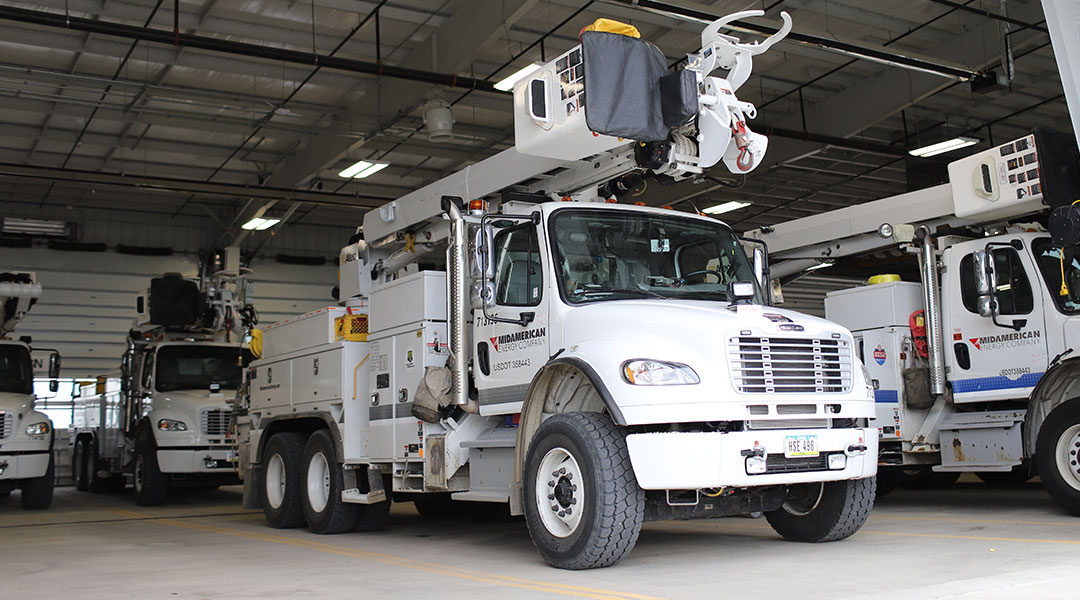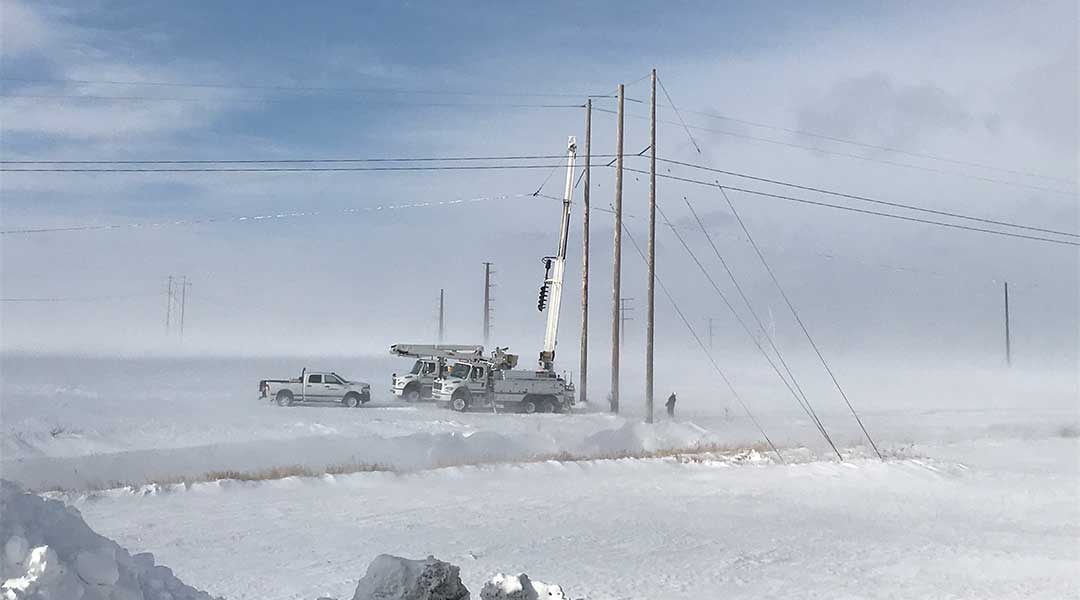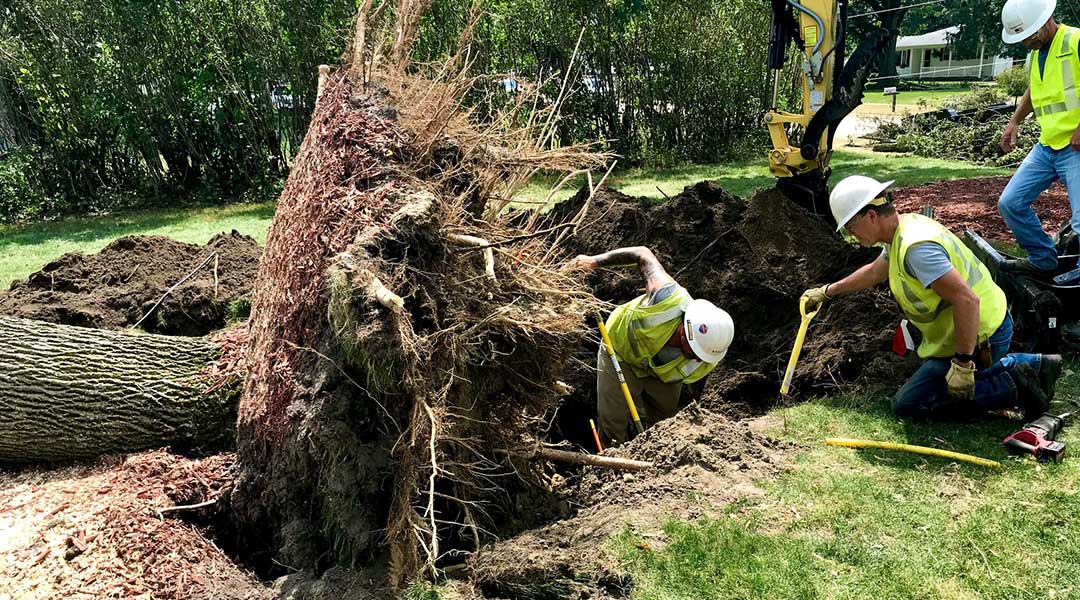Storm Safety
Severe weather is the most common cause of a power outage and can significantly damage your home or property. While you can’t control the weather, there are steps you can take that can help reduce its impact and keep you safe before, during and after storms or other severe weather events.
BEFORE THE STORM

Pack an emergency safety kit – Gather the flashlights, chargers, food, first-aid and other supplies you might need during a power outage in one place. Learn more about what you should pack in your safety kit.
Stay in the know - Sign up for our outage notifications to receive updates about power outages via email or text.
Monitor weather updates – Watch for oncoming storms and use a battery-operated radio to tune in to the National Weather Service for real-time updates.

What we do
We monitor our energy infrastructure long before storms reach our service territory to ensure we have all the crews, equipment and resources in place to safely restore power in the event that incoming severe weather causes an outage.DURING THE STORM

Stay inside – Seek shelter as quickly as possible in a severe storm. Downed power lines, lightning, strong winds and flood waters can all be dangerous during a storm.
Turn off or unplug electrical devices – If your power goes out due to severe weather, turn off or unplug your entertainment devices, computers, A/C units and other nonessentials. Electrical devices that may automatically start up when power is back on could overload your circuits.
Turn off heat-producing appliances - Unattended heat-producing devices like ovens, coffeemakers, hair straighteners, clothing irons, etc. are fire hazards, even during an outage.
Avoid contact with electric conductors – Power lines, metal, appliances, water and other conductors can be dangerous during severe weather. Always assume a power line is electrically charged. Don’t bathe or shower during a storm.
Report and monitor any outages – Don’t assume your neighbors have already called in that their power is out. It’s better for us to have multiple reports so we can quickly pinpoint where repairs are needed. Check your fuses or circuit breakers first, then report your outage.

What we do
We seek and invest in new technology like smart sensors and perform continuous inspections to improve our infrastructure and monitoring systems as part of our STAR initiative. These technologies and practices help us quickly determine the cause of an outage and safely restore power to affected areas. Watch how our crews work around-the-clock to safely restore power to every customer.Report and monitor any outages – Get our best estimate of when power in your area will be back up on our outage map. We can also give you real-time updates of our progress restoring your power when you sign up for outage notifications.
Watch out for electrical hazards – Downed power lines, electrical equipment, floodwater and conductive materials can be dangerous after a storm. Avoid traveling until you can be sure it’s safe.
Check for damaged equipment – After a severe weather event, there may be damage to your home’s service connection that is preventing your power from coming back on. Be mindful of what electrical equipment along or within your home or property is your responsibility to maintain. Always use a licensed electrician to make any needed repairs.
Reset for next time – Restock any supplies from your safety kit, replace or recharge the batteries to your flashlights and other emergency devices as needed, and return things to their proper places so you’re once again prepared for the next severe weather event.

What we do
We learn from every single outage event. The data we gather about the cause of an outage and how we respond to it helps us identify trends and find possible ways to prevent certain outages, as well as inform where we devote our resources to improving our infrastructure and inspection practices.


